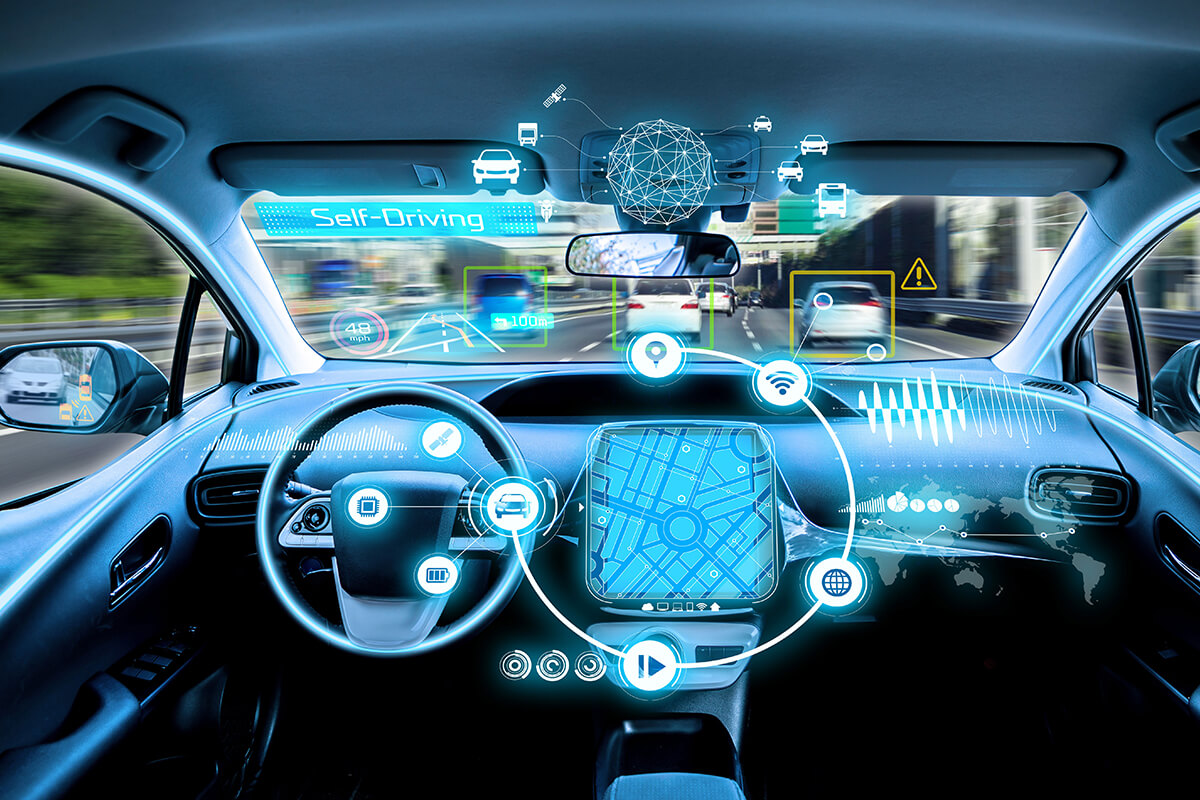The automotive industry is undergoing a remarkable transformation. Cars are no longer just modes of transportation but have evolved into intelligent machines. A vast range of advanced technologies is driving this shift, working together to enhance driving comfort, safety, and overall experience. The focal point of this revolution is mmWave (millimeter wave) technology, which is revolutionizing high-speed wireless communication inside and outside of vehicles.
What is mmWave Technology?
The term “mmWave” refers to a specific region of the electromagnetic spectrum, ranging from 30 GHz to 300 GHz. What distinguishes mmWave is its significantly wider bandwidth compared to the conventional frequencies used in cellular networks (sub-6 GHz), enabling much faster data transfer rates. This immense capacity is essential for supporting the next generation of automotive features and functionalities.
Unlocking the Potential of mmWave in Automobiles
For the automotive industry, the integration of mmWave technology opens up a world of possibilities:
- Improved Advanced Driver Assistance Systems (ADAS): High-resolution object identification, collision avoidance, and autonomous emergency braking are just a few of the advanced ADAS capabilities that depend on the real-time transmission of massive data sets made possible by mmWave’s high bandwidth.
- Vehicle-to-Everything (V2X) Communication: mmWave enables smooth communication between vehicles and infrastructure (V2I), vehicles and pedestrians (V2P), and vehicles themselves (V2V). This real-time information sharing facilitates safer driving by preventing collisions and opens the door for cooperative automatic driving.
- In-Car Entertainment and Connectivity: mmWave’s exceptional data transfer rates allow passengers to take advantage of lightning-fast downloads, smooth cloud gaming experiences, and high-definition streaming, which is a whole new level of in-car entertainment.
- Updates Over-the-Air (OTA): mmWave facilitates safe, effective, and efficient OTA updates for car firmware and software. This guarantees that automobiles always have the newest security patches and features installed, enhancing both performance and safety.
Challenges and Considerations for mmWave Integration
Even with its enormous potential, mmWave technology integration in cars comes with several difficulties:
- Range and Signal Penetration: Compared to lower frequencies, mmWave signals have a shorter range and are more prone to obstruction. This requires the precise placement of antennas and the creation of reliable signal-processing algorithms.
- PCB Design Complexity: Creating printed circuit boards (PCBs) that can withstand the high frequencies and intricate signal channels associated with millimeter-wave technology presents considerable hurdles for PCB design engineers. For best results, specialized materials and cutting-edge layout processes are required.
- Hardware Design and Development: Knowledge of high-frequency component design, antenna design, and signal processing systems is necessary for hardware design and development for mmWave applications. To overcome these obstacles, cooperation between automotive engineers and PCB design services is essential.
- Cost and Power Consumption: Compared to conventional cellular technology, mmWave technology currently requires higher implementation costs. Furthermore, higher power consumption may result from the high-performance parts needed for mmWave systems.
Overcoming the Challenges: The Road Ahead
The automotive sector is actively addressing these challenges by developing affordable mmWave components, enhancing PCB design services, and optimizing hardware solutions. These advancements are paving the way for widespread adoption of mmWave technology in automobiles.
The Role of Standardization and Collaboration
Strong industry standards are necessary for the broad use of mmWave technology in cars. To guarantee the safety and security of mmWave communication, car manufacturers, technology providers, and regulatory agencies must collaborate to define common protocols and ensure compatibility across various systems.
Investing in the Future: Research and Development
Extensive research and development (R&D) is necessary to advance mmWave technology in the automotive industry. This covers developments in:
- Science of materials: One major area of focus is the development of novel materials for PCBs and antennas that can withstand high frequencies with little signal loss.
- Techniques for beamforming: Reliable mmWave communication depends on optimizing beamforming algorithms to overcome signal blockage and increase range.
- Integration with existing technologies: Smooth integration of millimeter wave technology with current communication protocols, such as cellular networks, is crucial to ensure a seamless user experience.
PCB Design Expertise: A Critical Piece of the Puzzle
The effective application of mmWave technology depends heavily on PCB design. High-frequency design principles knowledge is necessary for PCB design engineers to produce high-performance PCBs that can manage the intricate signal integrity problems that come with mmWave. This comprises:
- Selection of high-frequency materials: For best results, select materials with low dielectric constants and little signal loss.
- Managed impedance architecture: Accurate management of impedance across the PCB design guarantees effective signal propagation.
- Signal integrity analysis: It is critical to examine signal behavior and spot possible problems before production by using sophisticated simulation techniques.
Car makers may make sure their vehicles have the hardware basis required to fully utilize mmWave technology by utilizing the experience of specialized PCB design services.
The Future of mmWave in Automobiles
The car industry stands to benefit greatly from the incorporation of millimeter-wave (mmWave) technology. Following the resolution of these issues, we should anticipate:
- Widespread use of mmWave: A new era of connected and intelligent cars will be made possible by mmWave technology, which will be included as standard equipment in new automobile models.
- New application development: mmWave’s extensive data transfer capabilities will allow for the development of cutting-edge applications including tailored in-car experiences and real-time traffic control systems.
- Safety and efficiency gains: By enabling improved ADAS capabilities and V2X connectivity, mmWave will be important in improving road safety.
The development of mmWave technology represents a major advancement in the history of the car. mmWave opens the door to a future where automobiles are more than just a mode of transportation; rather, they are intelligent, networked devices that transform driving for everyone.
Also Read: Impact of AI on VLSI Design
Wrapping Up
The connected car revolution has made remarkable strides with the integration of mmWave technology. Ongoing advancements in hardware design, PCB development, and industry collaboration promise to transform our interactions with vehicles. This technology not only enhances driving safety and efficiency but also makes the driving experience more enjoyable.



